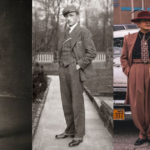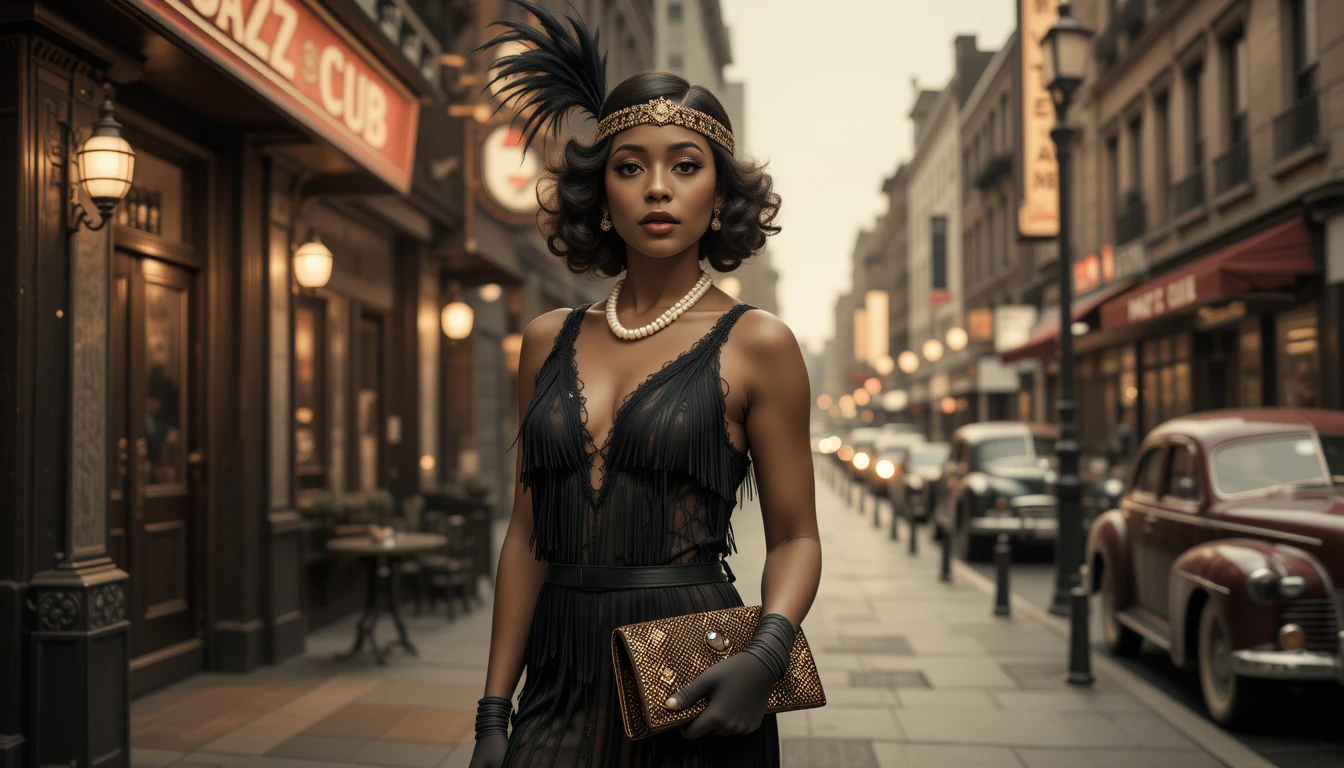During the 1920s in America, jazz music combined with national alcohol restrictions, while people experienced unusual social changes like never before. History mostly remembers the flapper dresses, but Black women during this time need proper recognition for their distinctive style, along with their significant cultural contributions. Fashion trends from the 1920s Black women direct their purpose toward both protecting cultural roots and recognising progressive female activists who fought against societal conventions and recognising the transformative power of clothing. The next sections will explore the Roaring Twenties’ social-cultural atmosphere responsible for generating these fashion developments. This section explores the Harlem Renaissance, which became a creative hub that established a distinctive style for Black fashion.
Historical Context: The Roaring Twenties
The socio-cultural background of black women
The fashion trends followed by black women throughout the 1920s showcased rapid development. Post-World War I brought permanent changes to society. Black women crossed into a period that proved difficult yet reshaping for them. Black women participated both in the larger movement of civil rights alongside gender equality alongside making substantial cultural contributions to the era. The fashion world in Harlem provided Black culture space to elaborate its identity through style.
Fashion designers and style icons of the time.
Madame C.J. Walker:
Madam C.J. Walker established a renowned business in haircare solutions but became better recognized for her fashion leadership throughout the Black community. Her refined and dignified fashion tendencies helped inspire numerous Black women of the next generation.
Josephine Baker:
As an international phenomenon Baker became known for her unconventional fashion choices which included her famous banana skirt while she showcased African-American beauty to challenge prevailing social norms.
Zelda Wynn Valdes:
This talented designer was a trailblazer, creating exquisite gowns for stars like Dorothy Dandridge and Ella Fitzgerald. She even designed the first Playboy Bunny costume!
Bessie Smith:
The Empress of the Blues, Smith’s signature style featured opulent gowns and elaborate headpieces, setting the standard for stage glamour.
Key Fashion Elements of 1920s Black Women’s Fashion
The 1920s were all about breaking the mould and embracing a new sense of freedom, and this ethos was most evident in the fashion of the era. Let’s explore the key elements that defined the style of Black women during this remarkable period.
A. Flapper Dresses
The characteristic features of flapper dresses
Flapper dresses were the epitome of 1920s fashion. These dresses were a stark departure from the restrictive corsets and long hemlines of the previous decades.
1. Loose and Straight:
Flapper dresses were known for their straight, almost tubular silhouette. They hung loosely from the shoulders down, allowing for unprecedented freedom of movement.
2. Short Hemlines:
A defining feature was the hemline, which typically rose to just above the knee. This was a radical departure from the floor-length gowns of the past.
3. Beaded Fringe:
Many flapper dresses featured intricate beading and fringe, which added movement and sparkle as the wearer danced the night away.
The evolution of flapper dress styles for Black women
Black women embraced flapper dresses with their unique twist, reflecting their cultural heritage and individuality. During the 1920s, they incorporated elements like:
1. African-Inspired Prints:
Some Black women incorporated African-inspired prints and patterns into their flapper dresses, celebrating their roots.
2. Daring Color Choices:
While pastels and muted tones were popular, Black women often opted for bold and vibrant colors, showcasing their confidence.
3. Innovative Tailoring:
Tailoring was key. Black women ensured that their dresses fit impeccably, accentuating their curves in a way that was both stylish and comfortable.
Challenges and Considerations
The glamorous yet famous 1920s fashion comes with specific considerations that people must understand.
1. Fit and Comfort:
A few people will experience discomfort from wearing the classic shape of straight-cut flapper dresses because of their loose design. Selecting clothing pieces which match your figure and give you a feeling of self-assurance represents a crucial step when creating your outfit.
2. Budget:
Original vintage items from that time period tend to come with high price tags. Modern consumers have the option of purchasing 1920s-inspired outfits at both thrift stores and contemporary clothing stores at affordable prices.
3. Accessibility:
Most styles that originated during the 1920s cannot be easily accessed today. The search for suitable vintage dresses demands a deliberate effort to locate them.
The importance of cultural sensitivity
Cultural sensitivity stands as a vital consideration before anyone considers wearing the fashion of Black women from the 1920s.
1. Respect Cultural Significance:
Turbans, together with prints inspired by African culture, should be worn carefully due to their meaningful cultural value. Everybody must wear these items with an appreciation of their cultural history.
2. Avoid Appropriation:
Cultural appropriation is a concern. It is essential to appreciate these styles through proper cultural recognition instead of misrepresenting them.
3. Educate Yourself:
Provide yourself ample time to study the historical worth and vital elements incorporated into your clothes. The practice of proper cultural respect demands a complete historical background.
Conclusion
We have reached the conclusion of our exploration into the elegance which returned to Black women’s fashion in the 1920s, and now it is time to examine the complete pattern we have developed. The Roaring Twenties introduced the world to a new tempo of social change, which led Black women to create their vivid expressions of style. The Harlem Renaissance harmonised with these fashion trends through its magical power, which launched diverse creative ideas, resulting in legendary designers who transformed fashion.











